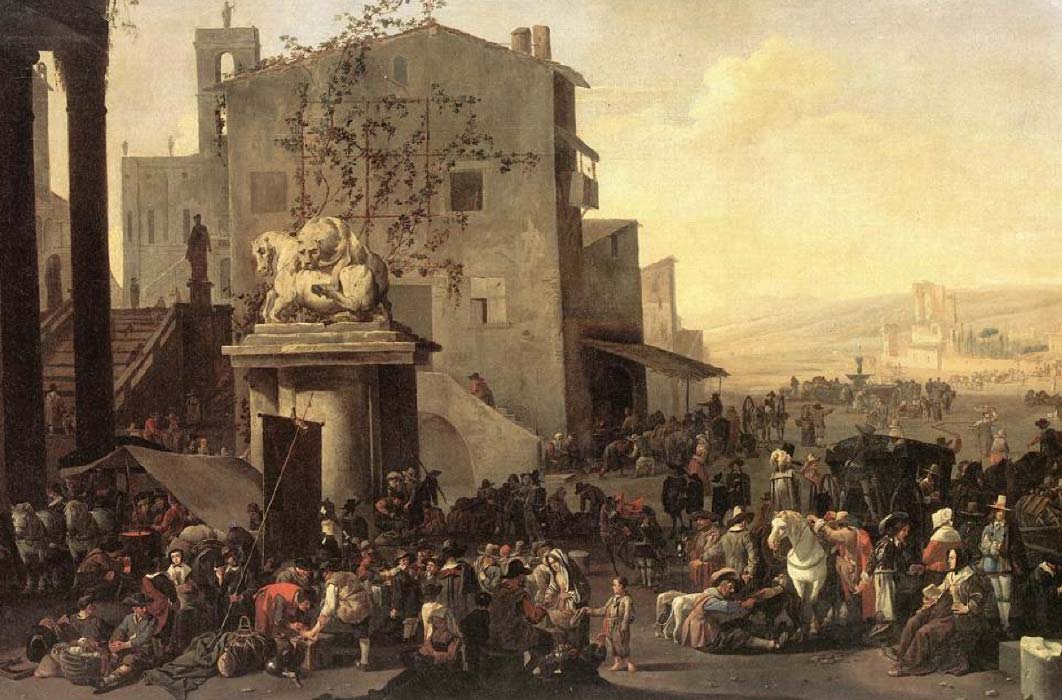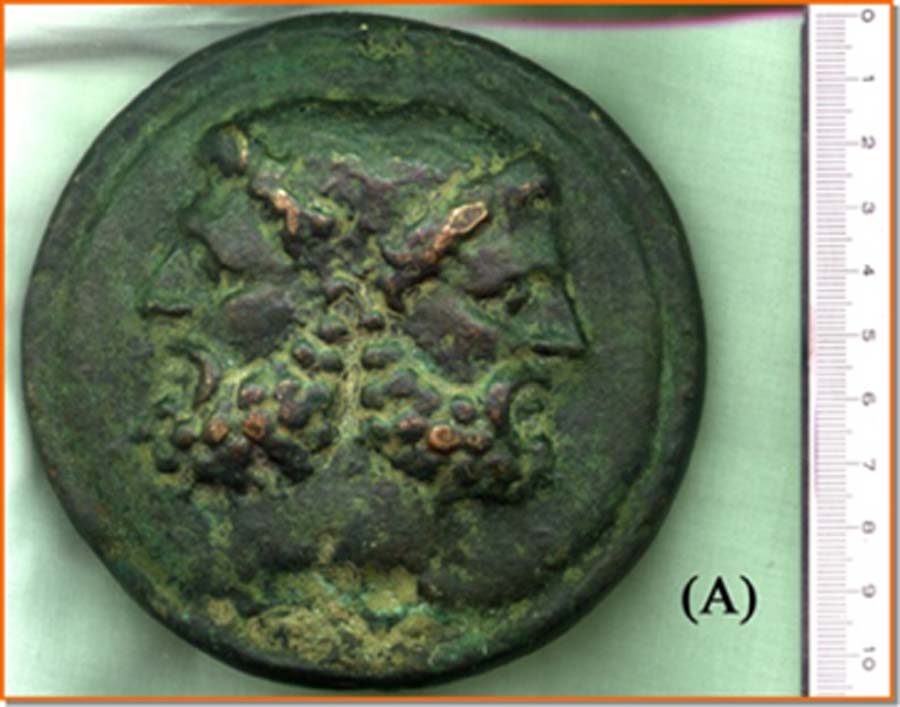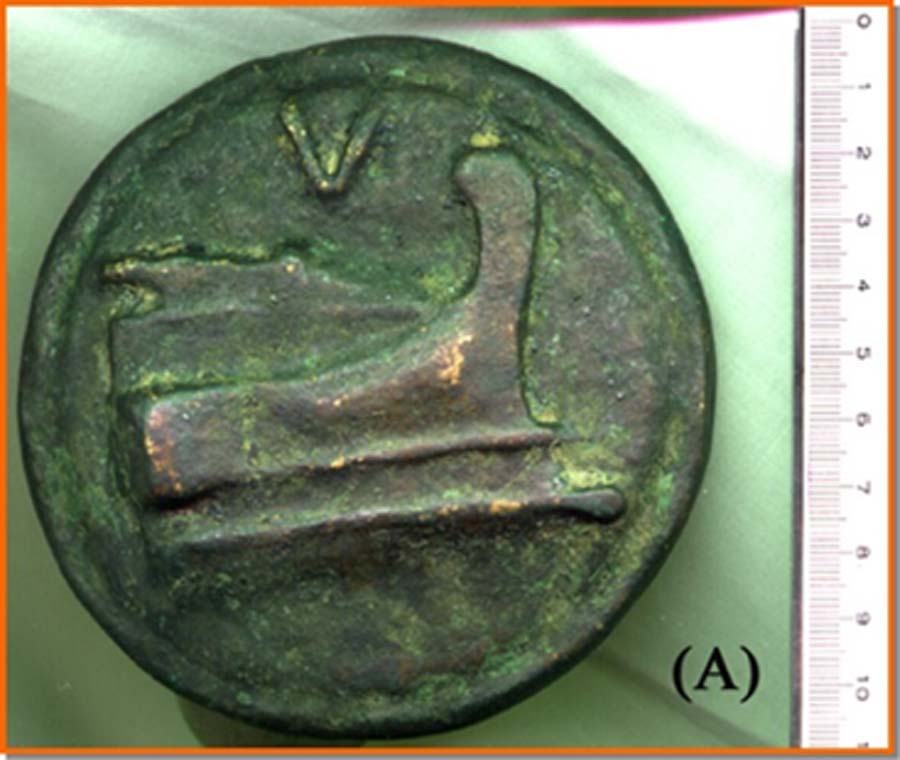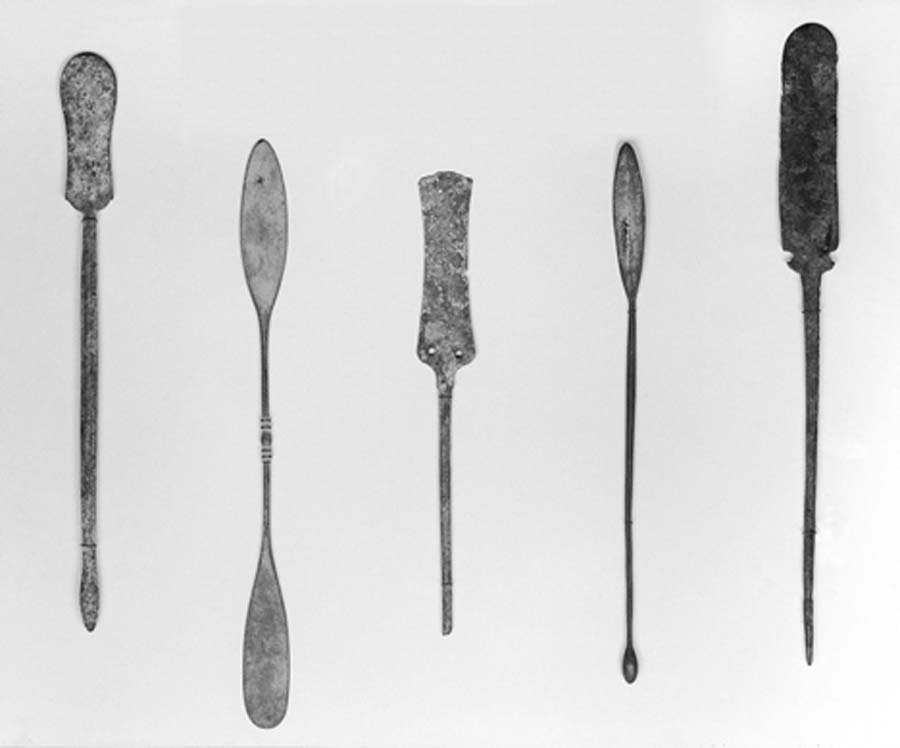
Mussolini’s Quincussis: Was the Ancient Roman Coin a Fake?
Scientists are perplexed at the origins and provenance of two very ancient and unusual Roman coins that turned up like a bad penny in the 20th century. A Quincussis - the correct scientific name of this strange find – has thus far only been mentioned in texts dedicated to the coinage of ancient times and at most only a drawing was reported, but no one has ever seen one, until one was presented to Dr Roberto Volterri of the Rome University for analyses and then its twin surfaced.

“Recto” of the coin of the private collector to natural size. It appears to be identical to that of the museum. Except for a very small detail illustrated in the text. (Image: Courtesy Dr Roberto Volterri)
The Mysterious Collector’s Coin
The coin belonged to a colleague of Dr Volterri, who inherited it from a relative who used it as a paperweight, since the coin was weighing in at five pounds. Made of bronze, with a diameter of more than 10 centimeters (3.93 inches) and a thickness of about three centimeters (1.18 inches), the coin has a ‘two-faced Janus' on the front and a 'ship's bow' on the reverse. The colleague mentioned that it originated from the Vesuvian area. Dr Volterri, who specializes in archaeometallurgy at the University of Rome, states that metals cannot be dated instrumentally, compared to organic finds (using the method of Carbon 14) or ceramic finds (using the technique of Thermoluminescence). Consequently, the task of dating the coin seemed extremely difficult, since the date would be based essentially on stylistic details, which could perhaps be supported by analyses of the composition of the alloy and the greenish patina that covered it. Dr Volterri showed the coin to a colleague of the university, who teaches ancient numismatics (the study and collection of currency), who estimated the coin could be worth an estimated one billion liras upwards.

“Verso” of the same coin, with the 'Bow of ship' and the indication of the weight, 'V', equal to five pounds, or over 1,300 grams (Image: Courtesy Dr Roberto Volterri)
While discussing the possibility that the Quincussis had actually been produced in some mint in the Vesuvian area between the fourth and third centuries BC, with his colleague specializing in numismatics, they were informed that the Quincussis had a 'twin' - a gift from a farmer to Benito Mussolini, which had been kept for decades in the medallion section of the Roman Archaeological Museum, lying there because the museum's curators did not trust to exhibit it, due to its provenance not being established.
Bartering and Exchange in Ancient Italy
In ancient times, before a monetary system existed, people bartered and exchanged provisions for daily living. Families exchanged with other families, neighbors with neighbors and tribes with tribes. This included essentials such as food and skins for clothing but also livestock and various wooden, woven and metallic utensils, to make life more bearable and pleasing. Soon this system evolved into 'enlarged barter', where the exchanged objects could be preserved over time, retaining their intrinsic value regardless of the purpose for which they were intended: fragments of amber, pearls, but especially large nuggets of various metals such as gold and silver gradually assumed a preponderant role in those embryonic stages of trade between individuals or between groups.

Roman and Greek bronze spatulae some with probe-ends (Wellcome Images / CC BY-SA 4.0)




